The combination of sweet and bitter flavors offered by sage makes it an excellent companion in the kitchen. Although well known for its use in the Thanksgiving turkey, sage plays an influential role in many dishes including risottos, oil infusions, osso bucco, tomato sauces, roast chicken, lamb patties, sausage making, and omelets.

Sage is commonly used to season turkey.
Very few households have every herb and spice at their disposal in the kitchen. There are many reasons for this. Space constraints in the cupboard mean it often isn't feasible. But I think a big reason is that we have a few favorites. The others are unnecessary; that is until we're cooking a special dinner, and we don't have that essential herb.
Finding a substitute for sage can be a little daunting. It has a unique flavor that is difficult to replace. Thankfully you don't need to throw down your cookbook in despair. Keep reading to discover the best alternatives for sage. You're sure to have one of these other options on hand. If not, it might be time to change the recipe or call for takeout!
5 Best Alternatives to Sage
1. Marjoram (editor's choice)
Amount to use: Use equal quantities to sage.

Marjoram: the winning option.
The flavor profile of marjoram is comparable to sage as they both have sweet, earthy undertones. Dried or fresh marjoram will both work well.
Some of the best dishes suited to marjoram include roast meats, sausages, and vegetables. They are all well suited to sage.
If you're going to use marjoram for a recipe that requires a slow cooking process, you're best to add it halfway through. Adding it too early will result in the marjoram losing intensity as it doesn't deal well with prolonged cooking times.
2. Savory (excellent backup option)
Amount to use: Use equal quantities of summer savory, reduce winter savory by ¼.
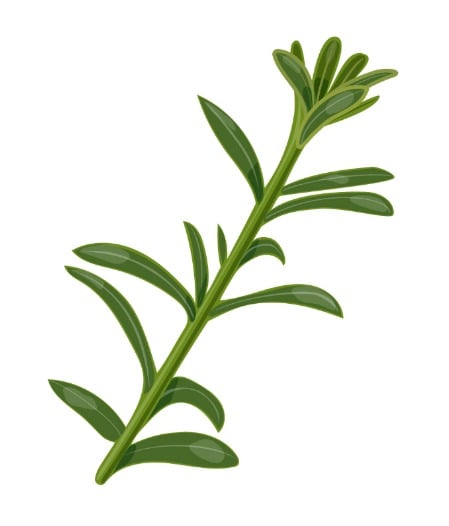
Savory: a pleasing alternative.
Savory isn't as popular as the other options on this list so if you don't have it in your kitchen then move on to the next alternative. However, some parts of the U.S. and Canada are huge fans of savory, so we have to mention it.
If you have savory in the cupboard, check if it's the summer or winter variety. Summer is more common, and it's the best option for substituting sage. Winter savory tends to have a more pronounced bitter taste which may not suit your dish. If you only have winter savory, reduce the quantity a little to reduce the effect of the bitterness.
Summer savory is an excellent option - it has a lovely peppery flavor and an aromatic odor. It's best to add savory towards the end of the cooking process if you are slow cooking. Cooking savory for too long will intensify the aroma and could result in an unpleasant meal.
3. Thyme (won't disappoint)
Amount to use: Use similar quantities to sage.
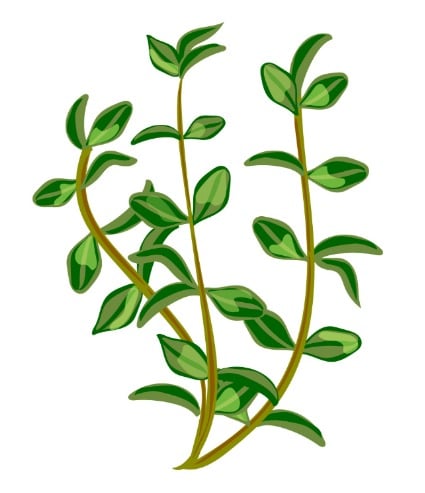
Thyme: it will do the job.
Use thyme as a versatile ingredient in a wide range of meat and vegetable dishes. It can be used in stuffing, and to enhance the flavor of veal, lamb, soups, chicken, fish, and turkey. Many other possibilities will work beautifully with thyme.
Unlike the previous herbs we've mentioned, thyme has no problems dealing with oven heat. If you have a recipe that requires a long cooking time, thyme is your friend.
4. Rosemary (go easy with this one)
Amount to use: Use ⅓ of the required sage.
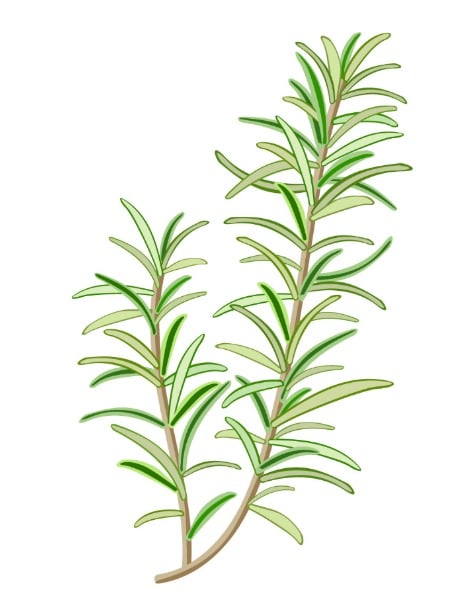
Rosemary: reduce the amount used.
Rosemary is a popular herb that has a strong flavor combined with a piney aroma. This sharp aroma can easily overwhelm the other ingredients in your dish. That's why, if you substitute fresh or dry sage for rosemary, you'll need to reduce the quantity used in the recipe. Rosemary holds its flavor; it doesn't lose any intensity once processed and packaged.
5. Poultry Seasoning
Amount to use: Use similar quantities to sage.
If you happen to have a container of poultry seasoning in the cupboard, then this is an excellent option to use in place of sage. It's a blend of herbs which usually includes, sage, marjoram, and rosemary - all herbs included in this list.
Infographic: best sage substitutes
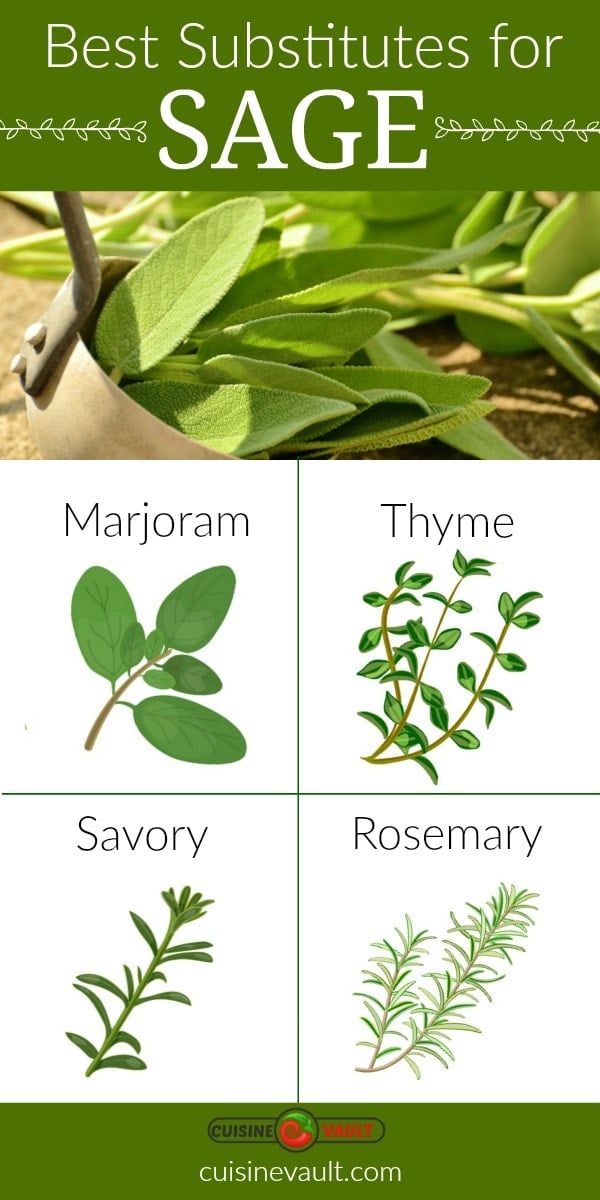
Why you should trust this list
Herbs were selected based on their plant family. You'll find they are all part of the mint family, which is a good starting point. They have some similar characteristics, although some have much stronger flavor profiles than others. Check out this list of plants in the mint family if you want more details.
We also researced foodie forums to get suggestions on what other cooks use in times of desperation.
Finally, food pairing is a "must use" tool if you're interested in learning about flavor. You'll discover what works well together and also what doesn't. Check out the image below for an example. The larger the green circle, the better the ingredients pair.
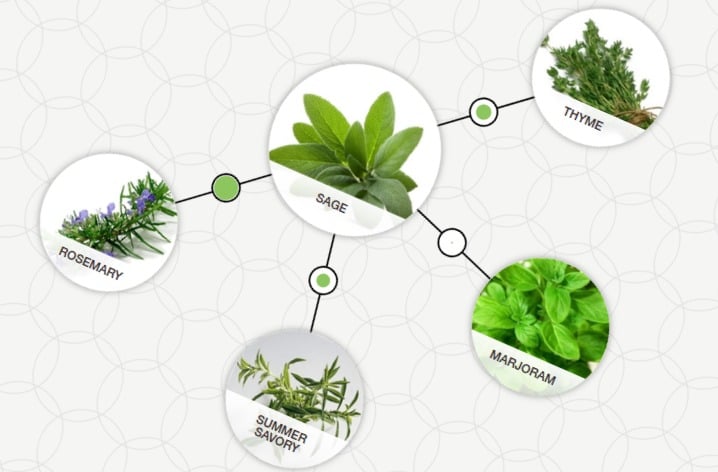
Pairing sage with other herbs.
Interestingly, the food pairing website endorsed rosemary, thyme, and savory as excellent options to match with sage - but marjoram seemed to fail the test. My preferred sage substitute was marjoram.
Final Words
Keeping a full stock of herbs in your pantry isn't realistic for many of us. At some point, you may need sage for a recipe but don't have any. Instead of giving up on the recipe, consider using a sage substitute.
The list of alternatives on this page offers good backup options, although it's important to point out the dish won't taste the same as the original. These substitute herbs offer characteristic flavors that are delicious but unique. My recommendation would be to use marjoram or thyme if you have them. Both versatile herbs that can be used in a wide range of cuisines.
Do you have a preferred alternative to sage? Drop a note in the comments below!

Leave a Reply